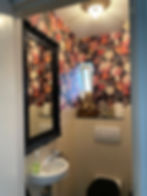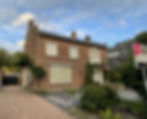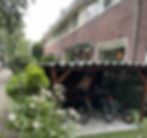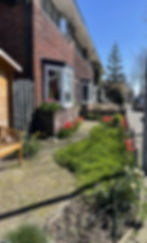Understanding Dutch Housing Terminology: A Guide for Americans Renting in the Netherlands
- Darien Wilson
- May 20
- 4 min read
Updated: May 22

As an American searching for a property to rent in the Netherlands, you may find yourself confused or even bewildered by some of the Dutch housing terminology—especially after translating listings from Dutch to English. For example, gestoffeerd literally means “upholstered,” but what does that actually mean in terms of housing?
Here’s a quick breakdown of common Dutch housing rental terms and how they compare to what you might be used to seeing when shopping for properties in the U.S.
Furnishing Levels: Kaal, Gestoffeerd, and Gemeubileerd
In the U.S., apartments are typically categorized as furnished or unfurnished. In the Netherlands, however, there are three furnishing levels:
Kaal ("bare"): This is what Americans might call a “shell.” A kaal apartment often lacks basic finishes like flooring, window coverings, and even light fixtures. You may even need to install your own appliances. These properties, while usually less expensive, are best for long-term rentals and not a good choice for an immigrant's first home in the Netherlands.
Gestoffeerd ("semi-furnished"): These units include finishes such as flooring (wood, laminate, or tile), and possibly window coverings (curtains or blinds) and/or lighting fixtures (often referred to as "lamps" in the Netherlands). They generally come with kitchen appliances like a stove, oven, and fridge. This is roughly equivalent to an “unfurnished” unit in American terms.
Gemeubileerd ("furnished"): These rentals are move-in ready and come with furniture, linens, pots and pans, dishes, and often even cleaning supplies. They are ideal for short-term stays or relocations of a year or less.
Tip: If you're planning to stay in the Netherlands for more than a year, especially two years or more, it's usually more cost-effective to rent a gestoffeerd property and furnish it yourself.

Understanding Space and Layouts
In the U.S., you’re probably used to measuring space in square feet and categorizing homes by bedrooms and bathrooms. In the Netherlands, space is measured in square meters (m²), and listings often describe the number of rooms (kamers) instead of just bedrooms.
A 3-kamer woning means the home has three rooms total, which usually includes the living room and two bedrooms.
Bathrooms are often split into two separate areas: one for the toilet (WC) and one for the sink and shower or bath (badkamer). Sometimes the toilet is on the main floor and the room with the sink and shower/bath is upstairs with the bedrooms.
Most WCs have a teeny tiny sink (like an airplane-sized sink) to wash your hands (pictured above), but if not, the kitchen sink can be used to wash your hands after using the toilet.
Popular Dutch websites for locating rental properties (such as Funda) do not allow you to search based on the number of bathrooms or toilets, as the majority of homes only have one bathroom and one toilet.

Types of Homes in the Netherlands
Appartement (Apartment): The most common housing type, particularly in urban areas.
A flat typically occupies a single floor.
Maisonette: A multi-level apartment, often with the entrance on one floor and bedrooms upstairs. This layout provides a bit more privacy and separation of living and sleeping spaces, and is especially common in renovated or purpose-built apartment blocks.
Studios are the same as in the U.S. - one-room living spaces with a private bathroom and kitchenette.
Kamer (Room): A kamer may refer to a single rented room in a shared apartment or house.
Rijtjeshuis / Terraced House: These attached homes are built in a row, sharing walls with neighboring houses. In the U.S., we usually call these townhouses or town homes, row houses, or attached single-family homes. A tussenwoning (middle unit) tends to be more affordable due to fewer windows and shared walls. A hoekwoning (end unit) may have extra space and more natural light.
Twee-onder-een-kapwoning (Semi-detached): This translates literally as "two under one roof" and is the Dutch equivalent of a duplex in the U.S., with two homes sharing one exterior wall.
Vrijstaande woning (Detached home or villa): These are free-standing houses, often called villas in Dutch listings. They are uncommon and usually expensive, except in rural areas.
Eengezinswoning (Family Home): Typically a multi-bedroom house designed for a single family. These can be terraced, semi-detached, or detached, and usually include outdoor space like a small garden or terrace.

Outdoor Space: Gardens, Terraces, and Balconies
Outdoor space is highly valued in the Netherlands, and many homes—whether apartments or houses—include some form of it. What Americans call a front yard or back yard is typically referred to in Dutch as a voortuin (front garden) and achtertuin (back garden), even if it's paved or very small. The word garden is commonly used for any private outdoor space, not just those with grass or flowers.
In apartments, it's also quite common to find a terrace (terras) or balcony (balkon), especially in newer or renovated buildings. A terrace is often larger than a balcony and may be partially enclosed or located on a rooftop. These outdoor spaces are usually included in the listing description and can significantly impact the rental price or desirability of the unit.

Tip: If outdoor space is important to you, search for listings with terms like tuin, balkon, or terras, and be sure to check whether the space is private or shared.
Curious about other housing differences between the U.S. and the Netherlands—like bathrooms, kitchens, and stairs? I've written about those, too.
Planning a Move to the Netherlands?
If you’re navigating the complexities of moving abroad, I can help. Work with me to approach your move with clarity, organization, and a realistic plan.
© 2025 Darien Wilson All Rights Reserved
